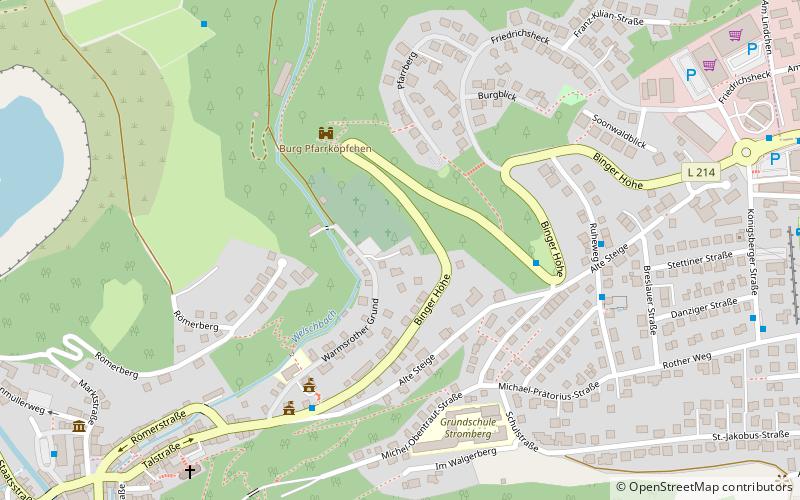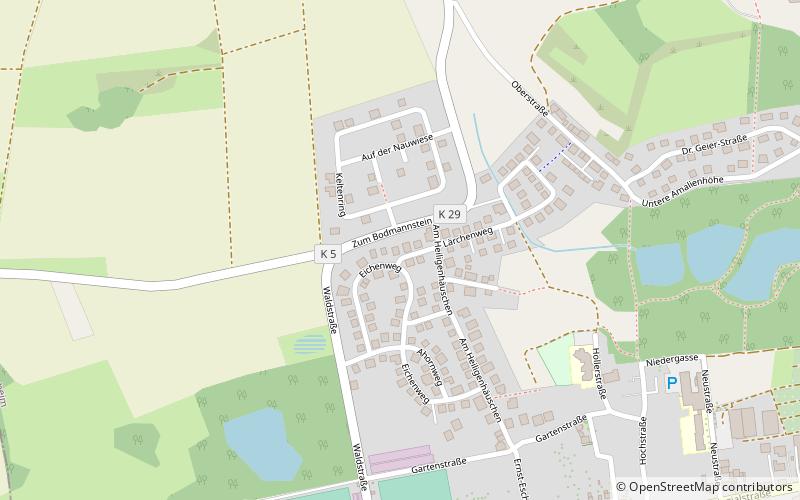Stromberg, Roth
#2 among attractions in Roth

Facts and practical information
Stromberg is a former Verbandsgemeinde in the district of Bad Kreuznach, Rhineland-Palatinate, Germany. The seat of the Verbandsgemeinde was in Stromberg. On 1 January 2020 it was merged into the new Verbandsgemeinde Langenlonsheim-Stromberg. ()
Stromberg – popular in the area (distance from the attraction)
Nearby attractions include: Rheinstein Castle, Niederwalddenkmal, Burg Klopp, Burg Sooneck.
 Polished hotel in a medieval castle
Polished hotel in a medieval castleRheinstein Castle, Trechtingshausen
122 min walk • Perched on a rocky promontory overlooking the Rhine River, Rheinstein Castle is a testament to Germany's storied past. Located near the town of Trechtingshausen, this enchanting castle dates back to the early 14th century and is a prime example of the romantic Rhine...
 Historic monument offering hilltop views
Historic monument offering hilltop viewsNiederwalddenkmal, Rüdesheim
149 min walk • The Niederwalddenkmal stands majestically above the vineyards of Rüdesheim am Rhein in Germany, a towering monument that celebrates the unification of the country. Erected in the late 19th century, this impressive structure is a beacon of national pride and a...
 Forts and castles
Forts and castlesBurg Klopp, Bingen
137 min walk • Perched on a hill above the quaint town of Bingen am Rhein, Burg Klopp is a testament to Germany's rich medieval heritage. This imposing castle, with its robust stone walls and commanding presence, offers visitors a glimpse into the storied past of the region.
 Forts and castles, Museum, History museum
Forts and castles, Museum, History museumBurg Sooneck, Trechtingshausen
138 min walk • Nestled in the verdant hills above the Rhine Valley lies Burg Sooneck, a historical gem in the quaint village of Niederheimbach, near Trechtingshausen, Germany. This medieval castle, steeped in history, offers visitors a glimpse into the region's storied past...
 Museum, Forts and castles, History museum
Museum, Forts and castles, History museumReichenstein Castle, Trechtingshausen
133 min walk • Reichenstein Castle, also known as Falkenburg is a castle in the UNESCO World Heritage Site of the Upper Middle Rhine Valley. It stands on a mountain spur on the eastern slope of the Bingen Forest, above the Rhineland-Palatinate municipality of Trechtingshausen in the Mainz-Bingen district in Germany.
 Waterfront fortress and ex-signal station
Waterfront fortress and ex-signal stationMäuseturm, Bingen
123 min walk • The Mouse Tower is a stone tower on a small island in the Rhine, outside Bingen am Rhein, Germany.
 Castle ruins, visible from hiking path
Castle ruins, visible from hiking pathEhrenfels Castle, Rüdesheim
127 min walk • Ehrenfels Castle is a ruined hillside castle above the Rhine Gorge near the town of Rüdesheim am Rhein in Hesse, Germany. It is located on the steep eastern bank of the river amid extended vineyards. The grape variety Ehrenfelser is named after the castle.
 Church, Gothic architecture
Church, Gothic architectureBasilika St. Martin, Bingen
133 min walk • The Basilica of St. Martin also called Bingen am Rhein Basilica Is the main catholic church of the city of Bingen am Rhein, in Rhineland-Palatinate in Germany. The church is located on the bank of the Nahe.
 Forts and castles
Forts and castlesGutenburg Castle
117 min walk • Nestled in the verdant hills of Germany, Gutenberg Castle is an emblem of medieval fortification and history. This imposing structure, with its robust walls and towering turrets, dates back to the 11th century and was primarily constructed for defense purposes.
 Nature, Natural attraction, Mountain
Nature, Natural attraction, MountainKandrich
102 min walk • The Kandrich, at 638.6 m above sea level, is the highest mountain in the Bingen Forest. It is near Daxweiler in the county of Bad Kreuznach in the German state of Rhineland-Palatinate.
 Prehistoric site
Prehistoric siteWaldalgesheim chariot burial, Roth
59 min walk • The Waldalgesheim chariot burial was a 4th-century BC Celtic princely chariot burial site in Waldalgesheim, Germany, discovered in 1869.